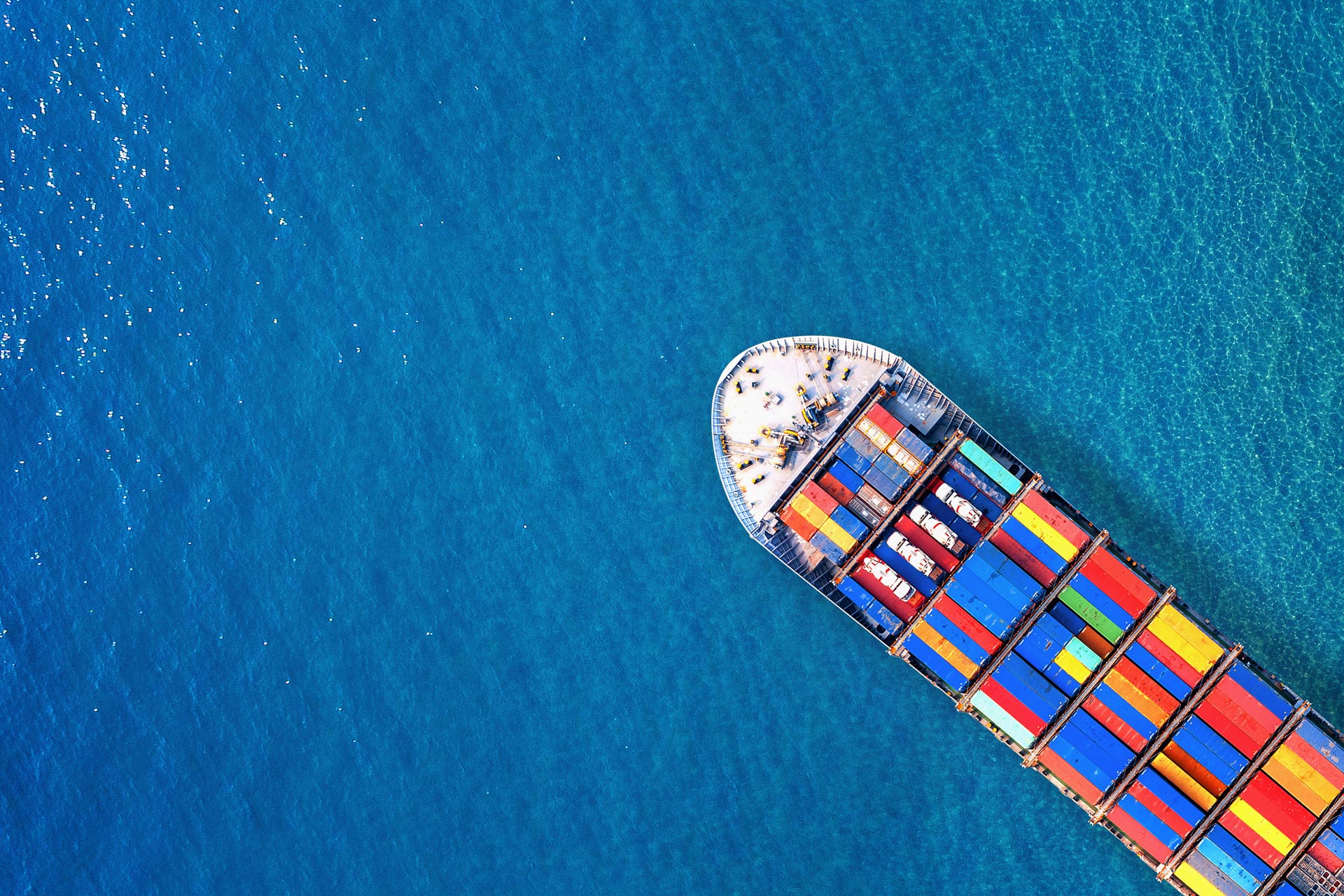BW Tankers - a teaching study to navigate shipping megatrends
BW Tankers - a teaching study to navigate shipping megatrends
By SMU City Perspectives team
Published
It’s a fine balance in the world of shipping. Risks – physical and cyber – are part and parcel of the ‘cargo’.
Think Covid-disrupted supply chains, the Suez Canal blockage, pirates in turbulent geopolitical waters, plus tighter international regulations for ships to curb their emissions. Then there are the technological risks. Blockchain and artificial intelligence can make for bumpy waters as regulatory and ethical frameworks slowly evolve to meet the adoption of such digital breakthroughs. Add to that, the new other pirates – cyber criminals – who seek to undo the benefits of digital transformation, one byte at a time.
But one shipping company, BW Tankers, has become a beacon of light and hope.
Its success in navigating towards a more sustainable future has been the subject of an award-winning teaching case study created by Singapore Management University (SMU) Centre for Management Practice, which offers thought leadership in management thinking and Asia-centric cases for learning across disciplines and issues. Written by Professor Annie Koh, Dr. Flocy Joseph, and Dr. Cheah Sin Mei, the teaching study, “Bold and Responsible Leadership in Uncharted Waters: The Future of BW Tankers”, was a runner-up in the 2022 Responsible Business Education Awards presented by the Financial Times of London in January 2022.
The awards showcase the best business-school teaching studies focusing on sustainability and climate change for learning. In short, it’s a reward for business schools “contributing most to a fairer, greener world”.
The SMU teaching case detailed the stormy waters of shipping through the lens of BW Tankers, and traversed short-term market cycles such as higher demand for tanker chartering leading to slimmer freight rates and lower earnings. It also covered medium-term challenges such as the international regulation for ships to curb the sulphur content of their fuel from 3.5 per cent to 0.5 per cent by 2020. In addition, it took to the horizon to consider longer-term opportunities and threats from the digital transformation of the sector.
BW Tankers’ claim to fame
BW Tankers is a subsidiary of the Singapore-based BW Group, which was established in 2005 from the merger of two long-standing shipping firms – Norway’s Bergesen and Hong Kong’s World-Wide Shipping.
The year 2018 was one of the tanker market’s worst years, with an oversupply of ships dampening charter rates. Despite that, BW Tankers took a chance and acquired Hafnia Tankers, elevating the former to market leadership in product tanker shipping with more than 150 commercially managed vessels.
Today BW Group is the world’s largest operator of product and chemical tankers, controlling a fleet of 490 vessels that transport oil, gas, and dry commodities. Gas isn’t just ‘cargo’, but also fuel for its ships. The fleet includes 200 liquefied-natural-gas (LNG) and liquefied-petroleum gas (LPG) ships, making it the globe’s largest gas fleet. LPG burns cleaner, produces less carbon dioxide than petrol, heating oil, or coal, and emits negligible black carbon. It makes sense as an environmentally-friendlier fuel to reduce the carbon footprint of shipping.
This industry produces about 3 per cent of the globe’s greenhouse gas emissions. It also faces a stiff International Maritime Organisation target to slash those emissions by more than two-thirds by 2050.
BW Tankers’ overarching strategy to achieve financial and environmental sustainability involves bringing together different investment partners to diversify and scale up across multiple shipping segments.
The voice from the bridge
“There’s no one fuel for each ship type in each segment – we can’t bet everything on one solution,” says BW Chairman Andreas Sohmen-Pao, the third-generation leader of the group and its predecessor companies. He shared these comments on a Lloyd’s List Intelligence video released late last year.
“We have to find a balance between urgency and panic. Most human progress happens in increments and then will pick up pace … You don’t just stand and look at the flywheel, but step up and put real investment and real action into motion. It’s the only way the flywheel will move.”

That gives an insight into Sohmen-Pao’s transformational leadership style. He ticks the boxes for being charismatic, inspirational, and intellectually stimulating. In the teaching case, Prof. Koh, Dr. Joseph, and Dr. Cheah point to the BW Group chair’s extra leadership traits:
- Adaptability in taking on a more active role after the group’s then CEO resigned
- Boldness in making a calculated move to acquire Hafnia
- Ensuring diversity of age, gender and nationality (26 countries represented) among his workforce, and
- Strategic decision-making to successfully diversify and scale BW Group across its segments.
The authors say: “Andreas comes across as a calculated risk-taker and a well-informed decision-maker. He collects as much information as he can and doesn’t jump into decisions. He also gives time for other activities, for example, he is a board member of the Singapore Maritime Foundation and the Singapore Symphony Orchestra.”
He is also a responsible citizen – consider his sustainability achievements in reducing his fleets’ emissions and expanding into green technologies. Sohmen-Pao is an influencer in leading by example. Under his helm, his group also rates highly on GlassDoor, where current and past employees anonymously review companies. Here’s how his leadership continues to reshape BW Group and the shipping industry.
Zero carbon shipping on the horizon

Sustainability is one of three megatrends affecting the shipping industry, which Sohmen-Pao successfully continues to tackle. However, there are no silver bullets for an industry that contributes to greenhouse gas emissions, although maritime freight causes less pollution than land or air transport. Instead, he considered three options to reduce the sulphur content in fuel – use a cleaner oil, installer a sulphur-removing scrubber, or burn LNG.
In the quest for decarbonisation, Sohmen-Pao chose LPG and LNG. It has a 20-year lifespan as a transitional fuel within the shipping industry. For example, LPG as a sustainable dual-fuel marine option offers about:
- 97 per cent less sulphur oxide emissions
- 90 per cent less particulate matter
- 20 per cent less carbon dioxide, and
- A fifth less nitrous oxide.
Furthermore, ship engines run cleaner on LPG, meaning cheaper maintenance and boosting output efficiencies by about 11 per cent. This fuel is easier to store, faster to refuel, and therefore leads to better economics for the entire voyage. It makes sense that BW LPG is retrofitting 15 of its very large gas carriers with LPG dual-fuel propulsion engines at a cool US$100 million investment.
It’s a long-term commitment – LNG-fuelled ships are US$10-20 million pricier to build. For a very large carrier, LNG costs more than US$3 million annually in fuel costs compared to the more sulphurous fuel, the teaching case found.
Meanwhile, BW Tankers is developing ammonia and hydrogen as longer-term options. It is committed to ensuring that by 2030 its new buildings will achieve net-zero emissions during their lifetime.
BW Group has also partnered to invest in solar power, offshore wind turbines as well as grid-scale battery storage and advanced biological wastewater treatment.
Smarter ships on the seas

The shipping industry has been slow to embrace the megatrend of digital transformation. As Jakob Bergholdt, Group Chief Financial Officer at the BW Group, notes: “Shipping is a latecomer to the whole digital game. Airlines are 10, 20 years ahead of us.” But progress has been made within BW Tankers, through the group’s investment in its SMARTShip initiatives with partner Alpha Ori, a B2B technology company focused on the logistics value chain.
The system uses artificial intelligence and variables such as vessel speed, design data to optimise total fuel consumption. It also compares vessels’ hull performance against historical data and benchmarks. The app even suggests when to clean the hull. SMARTShip’s real-time data and monitoring of their fleets’ fuel efficiency and performance can save up to 10 per cent in costs per voyage.
On the flip side, the study discovered that digital systems are vulnerable to cybersecurity issues such as virtual attacks. This happened in 2017 when shipping behemoth AP Moller-Maersk lost US$30 million due to a ransomware attack that halted its IT systems globally.
Understandable then that the maritime sector is looking to blockchain technology as being less risky in some aspects. The sector is exploring its potential to deal with the huge paper trail with standard systems. Digitalising the supply chain from end to end makes for greater efficiency and transparency in global trade.
Lessons for the future
The teaching case concludes that Sohmen-Pao’s decisions in 2018 saw BW Tankers invest billions of dollars during the shipping cycle’s trough. Diversification into new areas, digitally-powered business models, and key acquisitions have bolstered the group’s continued economic and environmental sustainability.
Find out more about this case study as well as many more about organisations operating in Asia that the SMU Centre for Management Practice produces.


